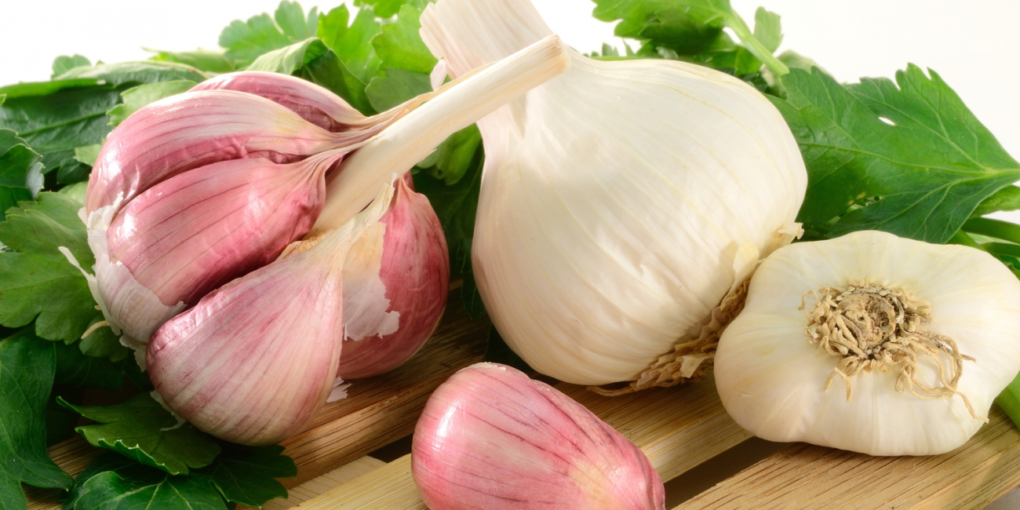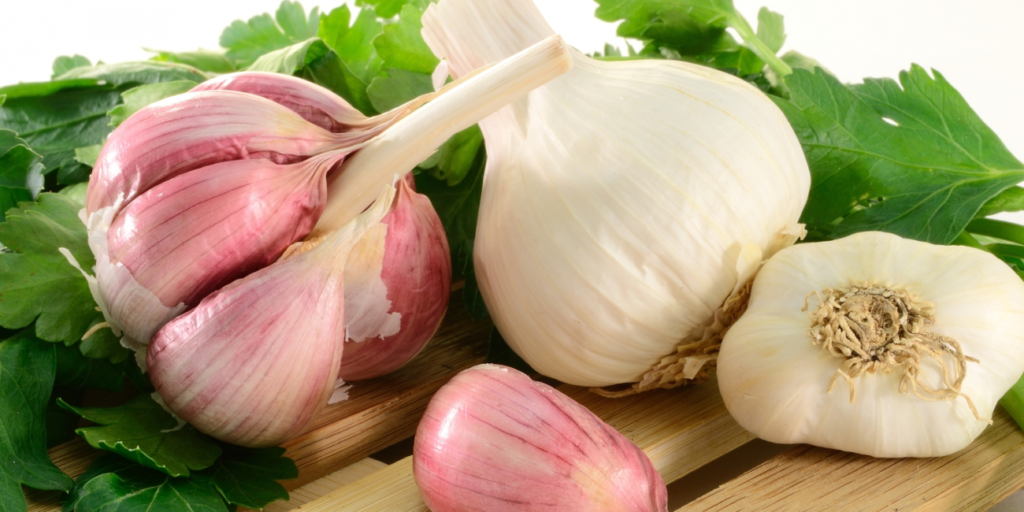9 Health Benefits of Garlic
STORY AT-A-GLANCE
- There are references to garlic in ancient medical texts from Egypt, Greece, China, India and Rome
- Hippocrates, regarded as the father of medicine, prescribed it for abdominal and uterine growths, pulmonary problems and as a cleansing agent
- Garlic is rich in health-promoting bioactive compounds, such as organic sulfides, saponins, phenolics and polysaccharides
- Garlic is a powerful antioxidant with anti-inflammatory, anticancer, antifungal and antibacterial properties
- Garlic’s therapeutic properties may act synergistically to support heart health and protect against heart-related events like heart attack
Civilizations around the world have treasured garlic for its culinary and medicinal uses for centuries. There are references to the pungent food in ancient medical texts from Egypt, Greece, China, India and Rome. Hippocrates, regarded as the father of medicine, prescribed it for abdominal and uterine growths, pulmonary problems and as a cleansing agent.1
In Greece, the earliest Olympic athletes consumed garlic, making it one of the first known “performance-enhancing” agents, and garlic was also given to laborers to increase strength.2 While often described as an herb or a spice, garlic is actually a vegetable that belongs to the lily family.3
Research shows that garlic offers a wealth of health benefits, including antimicrobial, anticancer and anti-inflammatory properties,4 making it a wise addition to your regular diet.
9 Reasons to Eat More Garlic
Garlic is rich in health-promoting bioactive compounds, such as organic sulfides, saponins, phenolics and polysaccharides. It also contains high levels of potassium, phosphorus and zinc, along with enzymes and sulfur-containing compounds including alliin, allicin, ajoene and allyl propyl disulfide.5
While bioactive compounds exist in intact garlic, even more, including allicin, are created due to chemical reactions when garlic is chopped or crushed.6 If you include this food in your diet, in supplement or culinary form, you may enjoy a number of beneficial effects.
Natural Blaze is Google-Free — We Need Your Support
Contribute Just $1 Per Month at Patreon to Aid the Cause of Health Freedom
1. Boost your antioxidant intake — Garlic is a powerful antioxidant that may help fight reactive oxygen species (ROS) in your body. In one study, aged garlic extract reduced ROS, helping to prevent endothelial dysfunction, which is a sign of early atherosclerosis.7
Garlic cloves also led to enhanced antioxidant activities in people with diabetes, while garlic extract — 400 milligrams a day for three months — also increased antioxidant status in obese adults, reducing cardiovascular risks and improving C-reactive protein (CRP), cholesterol levels and triglycerides.8
2. Reduce inflammation — The anti-inflammatory effects of garlic are also well-known. Aged garlic, in particular, contains compounds that modulate cytokine production, which is involved in immune system and inflammatory responses.9
Research also supports the use of aged garlic extract (AGE) to improve short-term recognition memory and relieve neuroinflammation in animals with Alzheimer’s-like disease.10 The study used fresh garlic that was aged to create the extract and produce organosulfur compounds such as S-allyl cysteine (SAC), which is found in far greater quantities in aged garlic and black fermented garlic than in raw garlic.
Garlic also decreases inflammatory biomarkers in adults with end-stage kidney disease, including significant reductions in inflammatory cytokines such as interleukin 6 and CRP.11
3. Reduce cancer risk — Garlic has a number of anticancer effects, including free-radical scavenging properties and decreasing cell proliferation and tumor growth.12 Garlic may reduce the risk of colorectal cancer,13 with one meta-analyses finding high intake of raw and cooked garlic is protective against both stomach and colorectal cancers.14
Organosulfur compounds in garlic further inhibit the formation of DNA adducts,15 or segments of DNA bound to potentially cancer-causing chemicals.16 Organosulfur compounds have also demonstrated activity against cellular proliferation in tumors that may be mediated by starting apoptosis.17
Other research revealed that consuming 5 grams of raw, crushed garlic daily for 10 days altered gene expression. Even one meal including raw crushed garlic activated the expression of seven genes in a way that helped inhibit tumorigenesis.18 Other research found people who ate more garlic had a 54% reduced risk of pancreatic cancer compared to those who ate less.19 According to the Memorial Sloan Kettering Cancer Center:20
 Dr. Mercola Fermented Black Garlic, 30 Servings (60 Capsules), Dietary Supplement, Supports Immune and Blood Pressure Health, Non GMO
Dr. Mercola Fermented Black Garlic, 30 Servings (60 Capsules), Dietary Supplement, Supports Immune and Blood Pressure Health, Non GMO
“Garlic may stimulate both humoral and cellular immunity, causing T-cell proliferation, restoring suppressed antibody responses, and stimulating macrophage cytotoxicity on tumor cells.
It may increase selenium absorption with possible protection against tumorigenesis. In addition, garlic may protect against certain cancers by halting cell cycle progression and inducing apoptosis of cancer cells as well as by decreasing angiogenesis and influencing carcinogen metabolism.”
4. Antifungal and antibacterial properties — Garlic inhibits growth of fungal diseases, possibly due to allicin, which acts as a fungicidal against many yeasts and fungi, including Candida albicans, Cryptococcus trichophyton, Histoplasma capsulatum, and Cryptococcus neoformans.21 Garlic also has powerful antibacterial properties and is capable of inhibiting the growth of both gram-positive and gram-negative bacteria, such as:22
|
Staphylococcus |
Streptococcus |
Micrococcus |
|
Enterobacter |
Escherichia |
Klebsiella |
|
Lactobacillus |
Pseudomonas |
Shigella |
|
Salmonella |
Proteus |
Helicobacter pylori |
5. Protect your heart health — Garlic’s therapeutic properties may act synergistically to support heart health and protect against heart-related events like heart attack.
AGE supplementation may increase microcirculation, helping to prevent the atherosclerotic process, while a garlic-herb preparation blocked atherosclerosis progression 1.5-fold in postmenopausal women, with the benefit lasting for 12 months.23 Further, according to a review published in the journal Antioxidants:
“Based on current research, garlic can significantly reduce the risk of atherosclerosis, hypertension, diabetes, hyperlipidemia, myocardial infarction, and ischemic stroke, thanks to the synergistic effects of its nutritional and phytochemical components.
For example, atherosclerosis and vascular inflammation are usually accompanied with oxidative stress, endothelial dysfunction, and inflammatory cytokines. From a dietary approach, garlic has the potential role in the prevention and treatment of atherosclerosis and myocardial infarction.”
6. Lower blood pressure — Among garlic’s heart-protective effects is the ability to lower blood pressure levels. Aged black garlic (ABG), which contains more antioxidants than raw garlic,24 may be particularly beneficial. One study analyzed how daily intake of ABG extract with SAC impacted cardiovascular risk factors in 67 people.25
The participants consumed 250 mg per day of a combination of SAC/AGE or a placebo for six weeks. At the end of the study, the researchers found that certain cardiovascular disease risk biomarkers were reduced in those taking the ABG extract.
This included a reduction in diastolic blood pressure of 5.85 mmHg as compared to those taking the placebo, especially in men with diastolic blood pressure over 75 mmHg.26 While it’s unknown exactly how garlic may lower blood pressure, the team noted:27
“The suggested mechanisms of action by which aged garlic could modulate blood pressure involve antioxidant activity by organosulfur compounds, such as SAC, in addition to allicin-derived polysulfides and the NOx and hydrogen sulfide signaling pathways, the regulation of transcription factors involved in hypertension, and ACE regulation.
Some of them have already been identified in the current ABG extract: antioxidant properties in vitro, improvement of vasodilation and levels of iNOS [inducible nitric oxide synthase] and eNOS [endothelial nitric oxide synthase], and regulation of the expression and levels of proinflammatory TNF-α.”
7. Lower risk of metabolic syndrome — Consume raw, crushed garlic — 100 mg twice a day for four weeks — led to a decreased risk of several risk factors for metabolic syndrome, including high blood pressure, triglyceride levels and fasting blood glucose. With antidiabetic, antilipidic and antioxidant properties, garlic is uniquely poised to ward off many of the underlying factors that contribute to metabolic syndrome.
Among people with Type 2 diabetes, for instance, consuming a garlic clove daily for 30 days reduced blood glucose, cholesterol and lipids metabolism, while other research showed daily garlic also increased beneficial HDL cholesterol.
Aged garlic extract, at a dose of 1.2 grams per day for 24 weeks, was also protective against metabolic syndrome, as it increased levels of adiponectin, a hormone in fat tissue that helps regulate insulin sensitivity and inflammation.28
8. Antidiabetic effects — Garlic also has antidiabetic effects due to its antioxidant and anti-inflammatory properties. Intake of garlic is beneficial for lipid profile and glucose parameters in people with Type 2 diabetes. In one study, consuming an herbal preparation that contained garlic, at a dose of 750 mg three times a day for 12 weeks, reduced fasting glucose levels, helping with diabetes management.29
9. Protect your bones, skin and other benefits — Garlic may play a role in healthy bones, helping to relieve symptoms of knee osteoarthritis while reducing osteoporosis in postmenopausal women. It’s also protective to your skin and may benefit warts, denture stomatitis, venous ulcers and skin wounds.30
Among hospitalized patients in intensive care units, garlic tablets may help prevent urinary tract infections and septicemia, while garlic is also beneficial for gastric diseases. Consuming raw garlic frequently is also associated with a lower risk of nonalcoholic fatty liver disease.31
Is More Potent Garlic Coming?
The enzyme allicin is behind garlic’s characteristic flavor and aroma. Research from Virginia Tech researchers discovered a new step in the process that produces allicin, opening the door to create more pungent garlic.
“A flavin-containing monooxygenase (FMO) produced by A. sativum (AsFMO) was previously proposed to oxidize S-allyl-l-cysteine (SAC) to alliin, an allicin precursor,” the team wrote in the Journal of Biological Chemistry.32 But it turned out a different process was actually responsible. A Virginia Tech news release explains:33
“The researchers found that allicin, the component that gives garlic its smell and flavor, was produced by an entirely different biosynthetic process. Allyl-mercaptan reacts with flavin-containing monooxygenase, which then becomes allyl-sulfenic acid.”
While this could pave the way for genetic engineering, the discovery could allow garlic crops to be tailored for stronger or weaker flavors, which may also have implications for the crops’ health benefits. According to study author Hannah Valentino:34
“This information changes the whole story about how garlic could be improved or we could make the compounds responsible of its unique flavor. This could lead to a new strain of garlic that would produce more flavor.”
References
1, 2 The Journal of Nutrition March 2001, Volume 131, Issue 3, Pages 951S-954S
3 National Center for Complementary and Integrative Health, Garlic
4 Journal of Biological Chemistry August 2020, Volume 295, Issue 32, P11042-11055
5, 6 Antioxidants (Basel). 2020 Jul; 9(7): 619., 3
7, 8, 9, 11, 12, 18 Antioxidants (Basel). 2020 Jul; 9(7): 619., 5.1
13 European Journal of Nutrition April 24, 2023
14 Am J Clin Nutr. 2000 Oct;72(4):1047-52. doi: 10.1093/ajcn/72.4.1047
15, 17 Saudi Pharmaceutical Journal, 2010;18(1):51
16 Journal of Pharmacy and Bioallied Sciences, 2015;7(S1):S197
19 ScientificWorldJournal. 2021; 2021: 8817288., 3.13 Anticancer Activities
20 Memorial Sloan Kettering Cancer Center, Garlic
21 ScientificWorldJournal. 2021; 2021: 8817288., 3.12 Antifungal Activity
22 ScientificWorldJournal. 2021; 2021: 8817288., 3.10 Antibacterial Activity
23 Antioxidants (Basel). 2020 Jul; 9(7): 619., 5.33. Cardiovascular Diseases
24 Food Chem. 2016 May 15:199:135-9. doi: 10.1016/j.foodchem.2015.11.128. Epub 2015 Nov 30
25, 26 Nutrients, 2022; 14(3)
27 Nutrients, 2022; 14(3), Discussion
28 Antioxidants (Basel). 2020 Jul; 9(7): 619., 5.2.3. Metabolic Syndrome
29 Antioxidants (Basel). 2020 Jul; 9(7): 619., 5.2.5. Diabetes
30 Antioxidants (Basel). 2020 Jul; 9(7): 619., 5.2.6., 5.2.7
31 Antioxidants (Basel). 2020 Jul; 9(7): 619., 5.2.6., 5.2.8. Other Diseases
32 Journal of Biological Chemistry August 2020, Volume 295, Issue 32
33, 34 Virginia Tech August 4, 2020
Dr. Mercola is the founder of the world’s most visited natural health web site, Mercola.com, a NY Times best-selling author, and a thought leader in the field of alternative and integrative health. Read his full biography on his website.
Disclaimer: This article is not intended to provide medical advice, diagnosis or treatment. Views expressed here do not necessarily reflect those of GreenMedInfo or its staff.
Originally published on www.mercola.com
Sourced from GreenMedInfo


 By
By 
